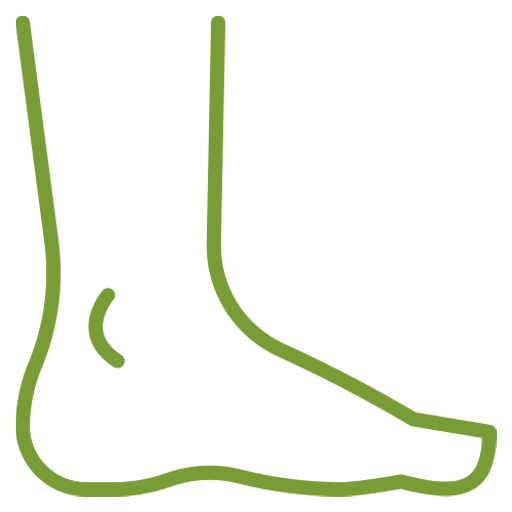A condition where one or more toes develop an atypical buckle in the central joint. These are commonly caused by poor-fitting or tight shoes.
Foot & Ankle
The foot and ankle are connected by a complex system of bones, tendons, and ligaments that all work in tandem with one another to sustain fluid movement and balance. They’re structured in a way that supports a natural and healthy arch in the foot, which is crucial for making fast, versatile, and twitchy movements possible.
The foot’s primary four ligaments include the Lisfranc ligaments, the plantar calcaneonavicular ligament, the calcaneocubid ligament, and the plantar fascia ligament. In total, the human foot is comprised of 26 different bones, over 100 different muscle structures, and 30 unique joints.
Whenever there’s an issue with one of these (whether caused by an external factor or not), pain tends to present as a common symptom.
Common Types of Foot or Ankle Pain
Pain symptoms that people with foot or ankle problems often report include:
- A burning, tingling, or numbing sensation in the toes or other regions of the foot.
- Dull aching in the foot joints or its muscles.
- Sensitivity to pressure or difficulty walking normally due to discomfort.
- Sharp, intense pains that may become more pronounced during certain times of the day.
- Swelling and tenderness that can make wearing or putting on shoes a challenge.
Causes of Foot or Ankle Problems
Multiple conditions can cause pain or restrict movement in the feet and ankles. Several of these are outlined below.
A large bump that develops in the big toe’s main joint due to chronic pressure.
Sprained, strained, or torn muscle
Occurs when moving and the foot isn’t planted properly before weight is put on it (frequently seen in those who play sports or dance).
A condition where the plantar fascia ligament becomes irritated from excessive walking on poor surfaces, bad shoes, or structural deformities.
Occurs when tissues surrounding the nerves in the feet begin to stiffen. Running too much or wearing high heels may cause the condition to develop.
Genetic or a result of aging, these deformities describe the erosion of the foot’s natural arch over time (or unnatural development from the start).
Commonly seen in older patients. Arthritis can affect the ankle joints, the toes, and the midfoot region.
Occurs when a tendon in the foot becomes inflamed from acute injury or chronic overuse.
When a tissue becomes pinched at the top of the ankle, impingement happens.
Improper twisting or injury by accidentally dropping something on your foot can cause bone fractures to occur.
Excess weight can subject your feet and ankles to unnecessary pressure, causing pain.













